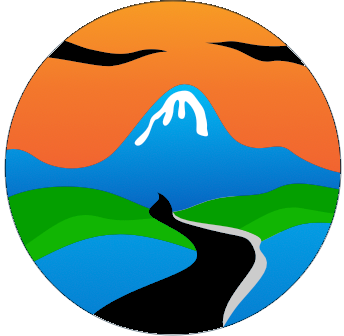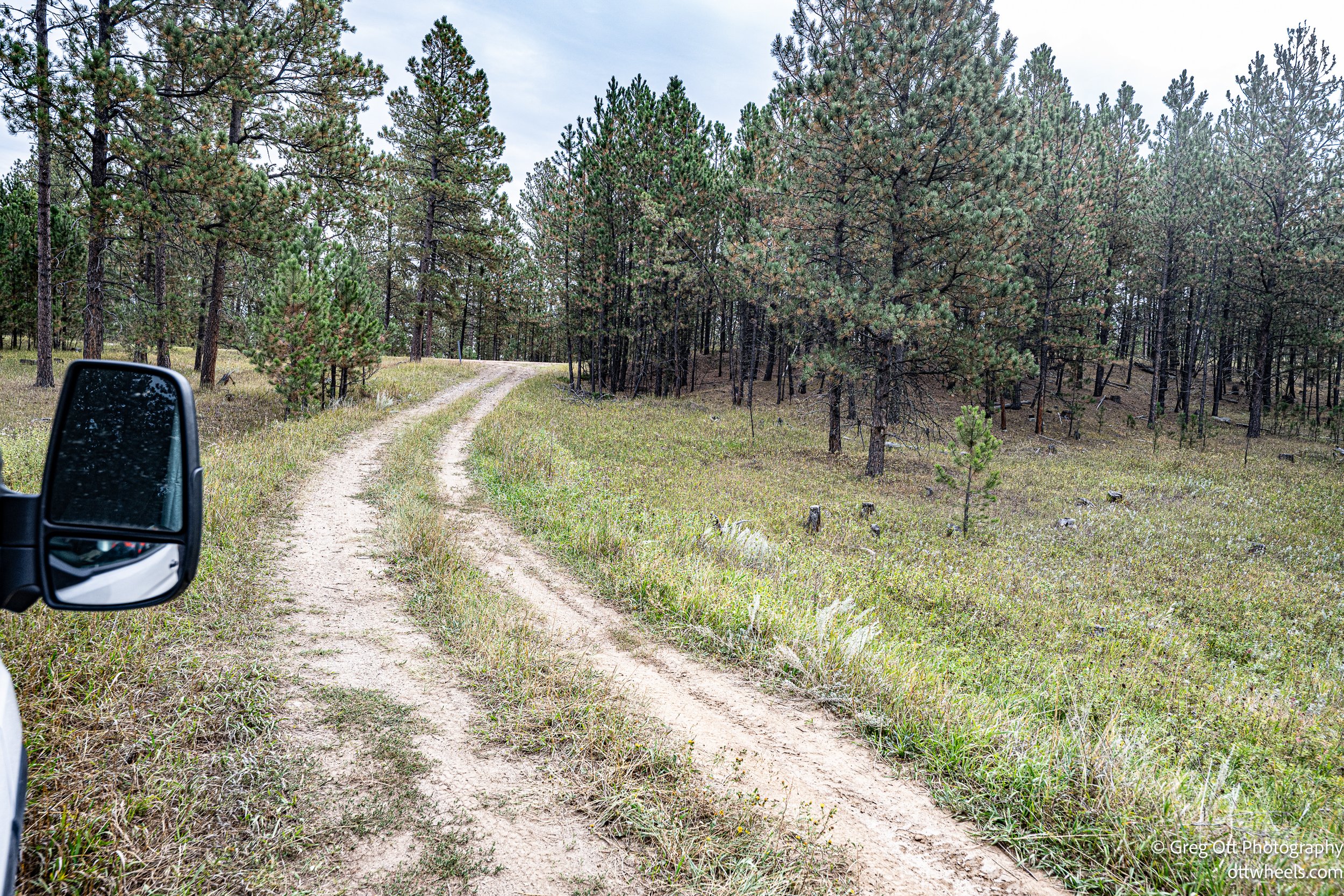Wind Cave National Park
This was an interesting place to stay in the Black Hills National Forest because there were so many people wild camping up here. I finally found a spot on the side of an ATV road. Around 9, I started here the ATV coming along the road above me, but they never turned down the road I was on. I headed into Custer late in the morning.
The van has been collecting dust and bugs from all the dirt roads I’ve traveled. I found Splish-Splash Wash in Custer with three different sized bays. I spent over an hour cleaning the van and still didn’t get all the pesky dust out of the cracks.
As I was leaving, I passed a truck stacked with antlers parked in front of a shop that sold hunting items and antlers. I circled back around and grabbed a photo.
Not far away was Maria’s Mexican Kitchen — a street vendor with a permanent setup. I ordered a small chicken burrito with medium hot sauce and a side of rice. The “small” burrito was more than enough for me and really filling. It was excellent: fresh-tasting, toasted on the outside, and packed with vegetables, chicken, and sauce. I brought my own drink from the van and took a seat at some tables in the back.
The tables turned out to be part of the VFW. As I ate, I caught the smell of whiskey from a glass someone had left on the table behind me. On the wall was artwork depicting different military units in action, which gave the place a bit of extra character.
Wind Cave National Park
I stopped at Wind Cave National Park in South Dakota. I wasn’t able to go on a tour underground because tickets were sold out, but I did spend time in the visitor center, which gave me a good sense of the cave’s history and the park’s significance.
The cave gets its name from the constant wind moving through its entrance. Native Americans had long known about it, and it held spiritual significance for the Lakota, who believe it to be a place of emergence. The written discovery came later, in 1881, when brothers Tom and Jesse Bingham noticed the strong wind blowing out of a hole in the ground. The story goes that the force of the air was enough to blow one of their hats right off.
Word spread quickly, and in 1890 the South Dakota Mining Company staked a claim to the cave. They wanted to turn it into a commercial attraction. A man named John Stabler and his family tried to develop it for tourism, building rough trails and ladders inside. Like many early cave ventures, it was a mix of excitement and exploitation, and disputes over ownership followed.
By 1903, the federal government stepped in to protect the site. President Theodore Roosevelt signed the proclamation establishing Wind Cave as a national park, making it the seventh national park in the U.S. and the first cave to be designated as one. The park was preserved not only for the underground cave system but also for its surface landscapes.
Wind Cave is one of the longest caves in the world, with more than 160 miles of mapped passageways so far — and new sections are still being discovered. Its biggest claim to fame is the rare boxwork formations: delicate, honeycomb-like calcite patterns found in very few places on Earth.
Above ground, the park protects nearly 34,000 acres of mixed-grass prairie and ponderosa pine forest. Bison, elk, pronghorn, prairie dogs, and other wildlife roam freely here. It’s one of the best spots in the Black Hills to see large herds in their natural environment.
Since cave tours were full, I stayed at the visitor center. The exhibits did a great job of explaining the geology and cultural history of the cave. Even without going underground, it was clear why this place was protected so early in the park system. It’s not just about what lies below the surface — the land above is just as important, with wide stretches of prairie and wildlife.
I spent some time reading in the parking lot until the visitor center closed at 5 p.m. After that, I did some research to find an overnight spot near Hot Springs. By the time I rolled into town, it was quiet — most places were closed, and the streets were nearly empty, likely a sign of the season winding down.
It was still daylight when I arrived at a wild camping site (43.39079, -103.73981) in the Black Hills National Forest. The iOverlander description read:
“Feels like we’ve got the Black Hills to ourselves. Forest service road clearly marked on National Forest maps as dispersed camping. Not well marked from the road and may go by other names (18S). This is also a grazing allotment that’s fenced — you’ll need to open and close a gate to access. Easy drive to a large flat area under the trees with beautiful views east. Likely a hunter’s camp — old bleached elk and deer bones scattered around. Expect some fresh cow pies too.”
That night I woke up and stepped outside to check the sky. The clouds had cleared, and stars stretched across the sky with a crescent moon directly overhead. It was almost a perfect night for photographing stars, except the moon washed out some of the detail.
Somewhere up the hill a cow was making loud grunting sounds. The air was fresh, in the 50s, and I just stood there taking it all in.











